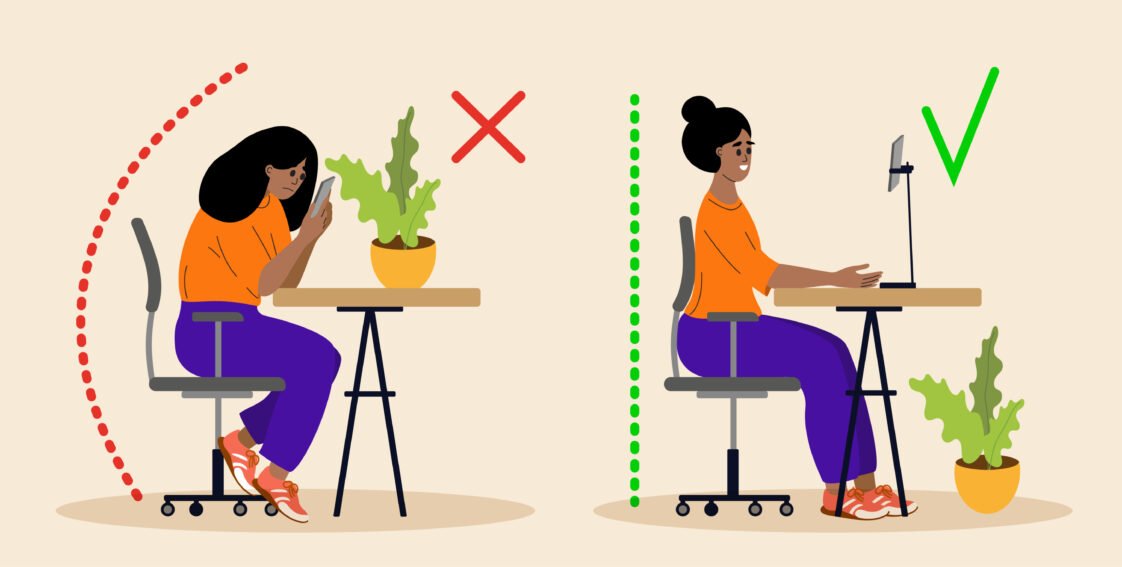In our digital age, poor posture has become a widespread problem. Whether you’re hunching over a laptop, slouching on the couch, or staring down at your phone, bad posture can have serious consequences for your body. But the good news? It’s never too late to improve your posture and prevent long-term health issues. Here at Total Health Systems, this is our goal.
The Effects of Poor Posture
1. Increased Risk of Pain & Injury
One of the most immediate effects of poor posture is chronic pain, especially in the neck, shoulders, and lower back. Slouching puts extra strain on muscles and joints, leading to stiffness, soreness, and even long-term musculoskeletal problems like herniated discs or nerve compression.
2. Decreased Lung Capacity & Breathing Issues
When you slouch, your chest becomes compressed, limiting your lungs’ ability to expand fully. This can lead to shallow breathing, reduced oxygen intake, and even fatigue, affecting overall energy levels and focus.
3. Digestive Problems
Poor posture can compress your abdominal organs, leading to slower digestion, acid reflux, and bloating. Sitting in a hunched position after meals can make these problems worse.
4. Headaches & Poor Circulation
Forward head posture (Tech Neck) increases tension in the neck and shoulders, which can trigger tension headaches. Additionally, bad posture can restrict blood flow, leading to poor circulation and cold extremities.
5. Mental & Emotional Impact
Posture doesn’t just affect your body—it influences your mood and confidence. Studies suggest that slouching is linked to increased stress, lower self-esteem, and even depressive feelings, while upright posture can boost confidence and reduce stress.
How to Fix Poor Posture
1. Practice Proper Sitting Position
- Keep your feet flat on the floor.
- Sit with your back straight and shoulders relaxed.
- Adjust your chair so that your knees are at a 90-degree angle.
- Use a lumbar support pillow to maintain the natural curve of your lower back.
2. Strengthen Your Core & Back Muscles
A strong core helps stabilize your spine and prevent slouching. Try incorporating these simple exercises to start:
- Planks: Strengthens your entire core.
- Bridges: Activates the lower back and glutes.
- Rows: Strengthens the upper back muscles to counteract forward head posture.
- Physical Therapy: Strengthens your postural muscles.
3. Take Frequent Breaks
If you work at a desk, set a reminder to stand up and stretch every 30 to 60 minutes. Simple stretches like shoulder rolls, chest openers, and neck stretches can relieve tension.
4. Adjust Your Workstation
- Position your computer screen at eye level to avoid looking down.
- Use a standing desk, if possible. Change between seated and standing frequently
- Keep your elbows at a 90-degree angle when typing to reduce wrist and shoulder strain.
5. Be Mindful of Your Phone Usage
- Hold your phone at eye level to avoid “text neck.”
- Use voice-to-text or earphones to minimize looking down.
6. Improve Sleep Posture
- Sleep on your back or side rather than your stomach, if you can.
- Use a pillow that supports the natural curve of your neck.
- Keep a pillow between your knees if you sleep on your side to align your spine.
7. Consider Professional Help
If you’re struggling with chronic pain or posture issues, consult a physical therapist or chiropractor for personalized exercises and adjustments.
Recover From Poor Posture
Poor posture may seem harmless at first, but over time it can lead to chronic pain, fatigue, and other health issues. By getting adjusted, making small, conscious adjustments to how you sit, stand, and try to move throughout the day, you can improve your posture and overall well-being.
Schedule your first chiropractic consultation at Total Health Systems today—your body will thank you! We offer chiropractic care, physical therapy, and other pain management solutions at six locations throughout southeast Michigan.

